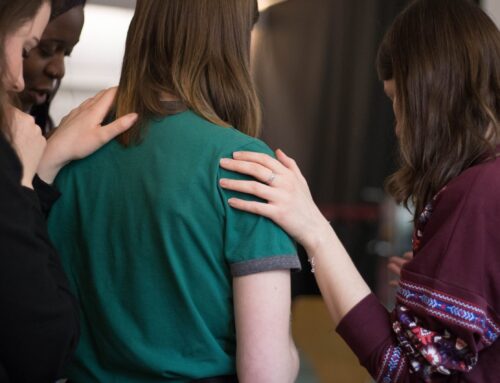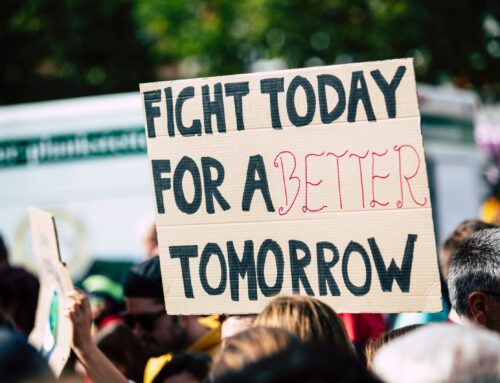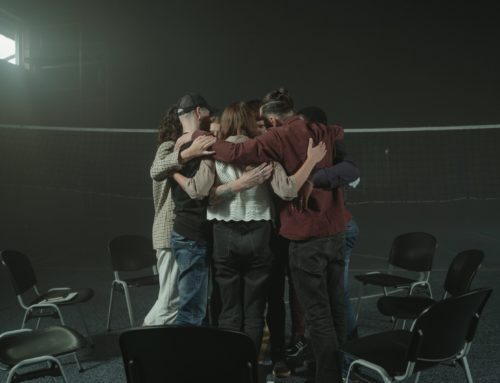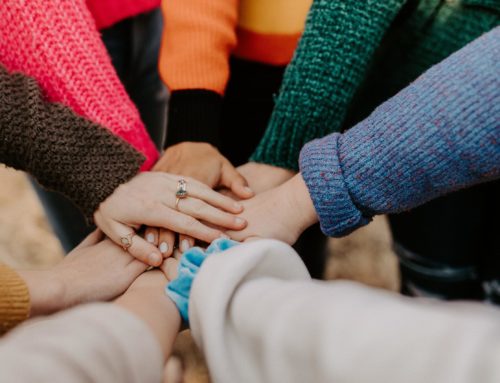 This is a time of widespread, debilitating, and absolutely understandable fatigue in higher education.
This is a time of widespread, debilitating, and absolutely understandable fatigue in higher education.
People who work for colleges and universities — regardless of their title, position, or category of employment — are worn out; not only that, but many, or most, students share the experience of being done, tired, over it. The simple “How are you?” question nets fewer polite and diversionary answers; “exhausted” has become common as both a self-assessment and a more sincere response to that question. While different people may feel exhausted about different things, nearly everybody feels, and is, exactly that: exhausted.
The list of reasons for this collective fatigue is both obvious and extensive. For most of us, it starts with the pandemic, viral variants, and vaccines, probably, but that is by no means all (without even thinking hard, we could add politics and politicians, sharply edged divisiveness, wrenching cultural conflicts, systemic and structural racism, fires and floods from climate change, economic and educational inequities, the perversities of social media, rising inflation, and…and). At the heart of it are two things: disappointment about what has happened, and despair about what might.
Feeling one of both of those has driven people to quit their jobs (including in higher education), not show up for job interviews, retreat from commuting, rethink their relationship to work in general, disengage from serious discourse, avoid getting married, and fear what the next morning’s headlines will reveal. Saying, as some commentators and journalists recently have, that all of this is “existential” is also obvious and equally unhelpful. Of course it’s existential; the veil and fog of fatigue have us wondering what really matters and pondering doubts about our purpose as human beings. As the nights get longer, darkness settles softly into the corners of our minds and raises those big human questions in new and confounding ways. Why work? Why care? Why go on? What difference does it make? Is this all there is?
You can’t deny that this moment feels, and is, existential, nor can you deny that great fatigue fuels it.
Appeals to positive psychology, syrupy nostrums (“Don’t worry, be happy”) and painful historical reflections (things have been bad before, and we’re still here) do little to bolster anyone’s crashing state of mind or rescue their slipping resiliency. Existential exhaustion isn’t susceptible to vague assurances about a brighter future; exhaustion sooner or later evolves into dread. The current state of the pandemic is a good example — about three quarters of Americans thought vaccines would end it; we could take off those masks and resume something called normal life. As it turns out, the vaccines are extremely effective in preventing serious illness and death; we would be in far worse shape without them. But the pandemic is not over, and likely will not be over; infections with the novel coronavirus that caused COVID-19 will become endemic — the virus and the diseases it causes will be around, with us, probably forever. Hearing that we, once vaccinated and booster-ed, will have to live with the virus and make our own decisions about the risks we’ll accept is, on the one hand, reassuring — but, on the other hand, deeply disappointing. What happened to “getting back to normal?”
We can acknowledge our existential fatigue, and accept our disappointment, despair, and dread; there is no point, and no value, in arguing that those things are somehow fake news. We know fake news when we see it, and it is one of the big reasons for our fatigue — it’s not the solution. But we might find in this existential moment something else: change. Such a comprehensive questioning of all the basics in our lives — work, values, money, truth, relationships — could foster different foundations, new frameworks, turns off the main roads of the past. What is the departure of so many staff members — and students — from higher education telling us? What should we learn from finding out that most students no longer find any compelling reason to respond to online surveys? Will the ugly lessons of inequity taught during the pandemic (compare who had to come to work anyway and who didn’t) influence the conversation about privilege and hierarchy in our institutions? What does today’s epidemic of anxiety among students (and many of us) tell us about how we should learn, work, and live? What insulation against today’s inflammatory rhetoric about critical race theory, or cancel culture, or the academy itself (J.D. Vance, the author of “Hillbilly Elegy,” says “The professors are the enemy”) will we need to be creative, generative, and imaginative again?
The dimensions of change are not mysterious.
The problem is not that we don’t know, or haven’t known, or can’t know what to do; the problem is that opportunities for change have been submerged, stifled, and snuffed out by the intransigency of staid institutional, organizational, and commercial culture. But change is the partner, or implementation plan, of existential moments. What might we do with this one, our own existential moment?
- In 2015, delegates from many countries met in Kelowna, British Columbia, and formulated the Okanagan Charter, an international framework for higher education that asks colleges and universities to become health-promoting institutions. The Charter includes two calls to action: (1) embed health into all aspects of campus culture, across the administration, operations, and academic mandates, and (2) lead health promotion action and collaboration locally and globally. Are we now, in this existential moment, ready to take campus health and well-being seriously, and become health-promoting colleges and universities? Is it now, when we feel least confident, that we put action, resources, and values behind our statements about the health, well-being, and thriving of our campus communities?
- Also in 2015, the United Nations adopted “The 2030 Agenda for Sustainable Development,” which provided a “shared blueprint for peace and prosperity for people and the planet, now and into the future.” The UN specified 17 sustainable development goals, which demand action from all countries — developed and developing — in a global partnership to end poverty and other human deprivations while improving health and education, reducing inequality, spurring economic growth, tackling climate change, and working to preserve our oceans, skies, and forests. Why shouldn’t we do that? What is so radical about ending poverty and hunger, providing for good health and well-being, ensuring quality education and decent work, and reducing inequalities and inequities? Does our existential moment at last create the potential for embedding these goals in our strategic plans, elevating them in our values, and establishing them as shared priorities? I would argue that sustainable development is required of a health-promoting university.
- Finally, in 2015 (that was quite a year),196 international partners, including the United States, signed the Paris Agreement on Climate Change, a legally binding treaty committing nations to reducing greenhouse gas emissions and weakening the impact of rising temperatures and higher sea levels. While former President Trump withdrew the US from the treaty in 2020, President Biden rejoined it on his first day in office in January 2021. Perhaps the suffering and losses we have endured because of wildfires, severe storms, and floods will generate from our existential moment a transformative spirit leading to greater well-being for all on a thriving planet. The Glasgow Climate Change Conference of the Parties to the Paris Agreement, completed just days ago, offers a stronger, more stringent blueprint for achieving climate goals.
Enthusiasm and excitement, like disappointment and despair, can themselves cause fatigue; imagining anything transformative in our current existential moment might only increase our exhaustion. Listen though, to Seamus Heaney, the Irish poet, who wrote, in “The Cure at Troy,” this:
Human beings suffer
They torture one another,
They get hurt and get hard.
No poem or play or song
Can fully right a wrong Inflicted and endured.
The innocent in gaols
Beat on their bars together.
A hunger-striker’s father
Stands in the graveyard dumb.
The police widow in veils
Faints at the funeral home.
History says, Don’t hope
On this side of the grave…
But then, once in a lifetime
The longed-for tidal wave
Of justice can rise up,
And hope and history rhyme.
So hope for a great sea-change
On the far side of revenge.
Believe that a further shore
Is reachable from here.
Believe in miracles
And cures and healing wells.
Call miracle self-healing:
The utter, self-revealing
Double-take of feeling.
If there’s fire on the mountain
Or lightning and storm
And a god speaks from the sky
That means someone is hearing
The outcry and the birth-cry
Of new life at its term.
It means once in a lifetime
That justice can rise up
And hope and history rhyme.
Heaney published his poem in 1991. Maybe it is time. Perhaps this existential moment is when hope and history next rhyme. Look and see if it’s coming. Look steadily and deeply into the eyes of your students; it is there that you will glimpse it — the birth-cry of new life at its term.
Richard P. Keeling, MD, Chairman, wrote this essay for the Council for the Advancement of Standards in Higher Education (CAS) and presented it at their Council of Representatives Meeting on November 16, 2021.
Keeling & Associates, LLC is a comprehensive higher education consulting and professional services firm that creates “change for learning” through its strategic planning, consultation, and executive search services across North America. Let’s create change for learning together.






Leave A Comment